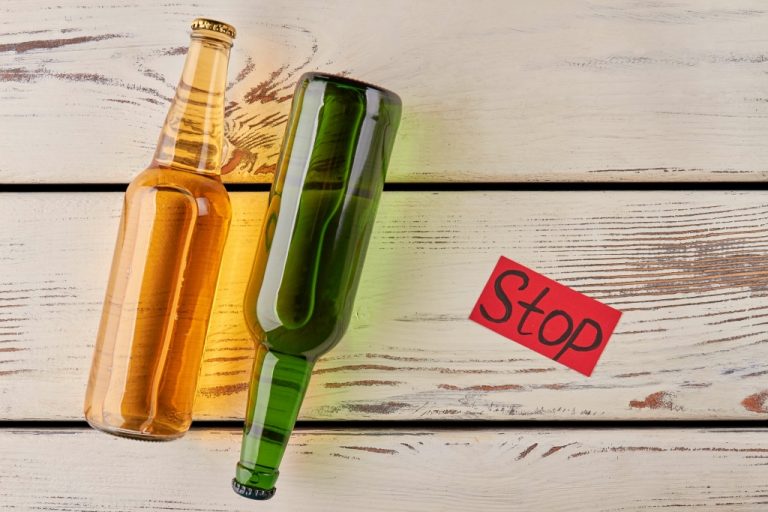This level can be reached for most people by four or five drinks in a two-hour span,” Lander said. The Substance Abuse and Mental Health Services Administration also defines heavy alcohol use as binge drinking five https://ecosoberhouse.com/ or more times per month. If you’re drinking socially, but a lot, you might be entering into problematic territory. You should be wary if you cross the line into what’s called “heavy drinking,” said Lander.
- By Amy Morin, LCSW
Amy Morin, LCSW, is a psychotherapist and international bestselling author.
- But for some, it won’t ― and that’s when a doctor needs to get involved.
- Depending on the needs of the user, the medications may be taken for many years after rehabilitation is complete.
- Genetic factors make some people especially vulnerable to alcohol dependence.
- One of the main strengths of this study is its focus on the variables that may affect the students use of protective strategies for alcohol consumption.
The social drinking definition is someone who regularly drinks alcohol in a variety of social settings. However, drinking doesn’t disrupt their life or create serious physical, mental or personal problems. ” It’s hard to define the lines that separate social drinking, problem drinking, and alcoholism.
What is the Difference Between an Occasional Drinker and a Social Drinker?
A psychologist can begin with the drinker by assessing the types and degrees of problems the drinker has experienced. The results of the assessment can offer initial guidance to the drinker about what treatment to seek and help motivate the problem drinker to get treatment. Individuals with drinking problems improve their chances of recovery by seeking help early. While some research suggests that small amounts of alcohol may have beneficial cardiovascular effects, there is widespread agreement that heavier drinking can lead to health problems. In contrast, alcoholics may be given countless reasons to cut back on their drinking but they are unable to permanently cut back. Alcoholics may have occasions where they drink in a low-risk manner, but they inevitably return to their alcoholic drinking patterns.

Footprints to Recovery treatment center can help you recover from alcohol or drug addiction. We’ll address the underlying causes of substance use disorders, like trauma or a dual diagnosis (co-occurring mental health disorder). Our therapists and addiction medicine professionals use proven substance abuse treatment approaches and teach you healthy relapse prevention skills so you can stand strong in the face of triggers. Drinking too much at one time or on any given day, or having too many drinks over the course of a week, increases the risk of harmful consequences, including injuries and health problems.
What Is Problem Drinking?
Most of the time, problem drinkers function normally without giving alcohol a second thought. As they mature, most people with a drinking problem can give alcohol up without any withdrawal symptoms, separating themselves from addicts. You may start as a social drinker and slowly become a problem drinker as you begin to consume more alcohol. Instead of drinking as a social activity, problem drinkers spend a lot of time drinking alone.

Perhaps you’d appreciate a sober buddy, or someone else staying sober with you when you go out or helping you resist the temptation to drink. You might even still like to do the same things—such as playing cards or watching movies together—but without alcohol. The datasets used and/or analyzed during the current study are available from the corresponding author on reasonable request.
Types of Professionals Involved in Care
In open bar parties, for example, the care should involve protective resources that do not depend on the decision-making of heavy drinkers. In this context, damage control actions such as wide availability of free water and food establish considerable protective relevance” [18, 19, 46]. There are different theoretical models that aim to clarify how behaviors are expressed in social contexts. However, individual capacity for observation and self-regulation of consumption also seems to be essential [23,24,25].
The Scottish Health Survey 2022 – volume 2: technical report – The Scottish Government
The Scottish Health Survey 2022 – volume 2: technical report.
Posted: Tue, 05 Dec 2023 09:31:24 GMT [source]
It is widely available in stores, restaurants, and bars, and is often used to socialize, relax, celebrate special occasions, and even to maintain health. Some people require the space away from triggers like parties and events and the intensive treatment https://ecosoberhouse.com/article/social-drinking-and-drinking-problem/ experience that inpatient rehab provides. Others can begin their addiction recoveries with day treatment in outpatient rehab. Professional treatment provides behavioral therapy and addiction counseling in individual and group therapy formats.
Facts About Aging and Alcohol
If you beat yourself up over your choices and actions when under the influence of alcohol, it may be time to look at the role alcohol plays in your life. ” The following 10 signs can help you clarify if the relationship you have with alcohol is bringing about negative consequences. Social drinking continues to be prevalent in our society, and for many people there is no cause for concern. But there are many other cases in which drinking alcohol becomes habitual for a person, and leads to dependency. A common question among people who struggle with alcohol use is “do I really have to stop drinking permanently?
- Nor does the absence of family drinking problems necessarily protect children from developing these problems.
- They usually recognize and acknowledge their problem only after an accident or a meaningful, negative alcohol-related event—or after they hit absolute rock bottom.
- Perhaps you’d appreciate a sober buddy, or someone else staying sober with you when you go out or helping you resist the temptation to drink.
- Assuming an individual not an alcoholic, drinking responsibly means drinking with full conscious awareness of what one is doing and why they’re doing it.
In addition to choosing the type of treatment that’s best for you, you’ll also have to decide if that treatment is inpatient (you would stay at a facility) or outpatient (you stay in your home during treatment). Your healthcare provider can help you evaluate the pros and cons of each. Professionals in the alcohol treatment field offer advice on what to consider when choosing a treatment program. Scientists are working to develop a larger menu of pharmaceutical treatments that could be tailored to individual needs. As more medications become available, people may be able to try multiple medications to find which they respond to best. The U.S. Food and Drug Administration (FDA) has approved three medications for treating alcohol dependence, and others are being tested to determine whether they are effective.
Fallen grapes that have fermented on the ground are about 3 percent alcohol by volume. At these levels, unless people are strenuously trying, they rarely manage to drink enough to pass out, let alone die. Modern liquor, however, is 40 to 50 percent alcohol by volume, making it easy to blow right past a pleasant social buzz and into all sorts of tragic outcomes. People with unhealthy alcohol use (also called alcohol use disorder or AUD) can’t always predict how much they will drink, when they will stop, or what they will do while drinking.
- When the term “high-functioning alcoholic” is mentioned, various types of drinkers often begin to question their own drinking and worry if they fall into this category.
- They don’t feel the urge to drink during the week and lead an otherwise functional life but may spend Friday night through Sunday in an alcoholic stupor.
- After more than a year in relative isolation, we may be closer than we’d like to the wary, socially clumsy strangers who first gathered at Göbekli Tepe.
- A psychologist can begin with the drinker by assessing the types and degrees of problems the drinker has experienced.
- Heavy drinking can cause physiological changes that make more drinking the only way to avoid discomfort.
However, protective strategies can be influenced by the context of alcohol use, alcohol consumption patterns, and motivations to drink, or not to drink. This study identified protective behavioral strategies and motivations to control drinking among Brazilian college students and found they were less used in contexts where there is an overall high alcohol consumption. These findings corroborate other recent studies in the area that point in the same direction [14, 15] and highlight the need for the development of preventive programs considering specific drinking contexts and patterns of alcohol consumption. One of the main strengths of this study is its focus on the variables that may affect the students use of protective strategies for alcohol consumption. Through the qualitative analysis of the participants’ reports, it was possible to detect that the protective strategies can be influenced by contexts, motivations, and consumption patterns.
